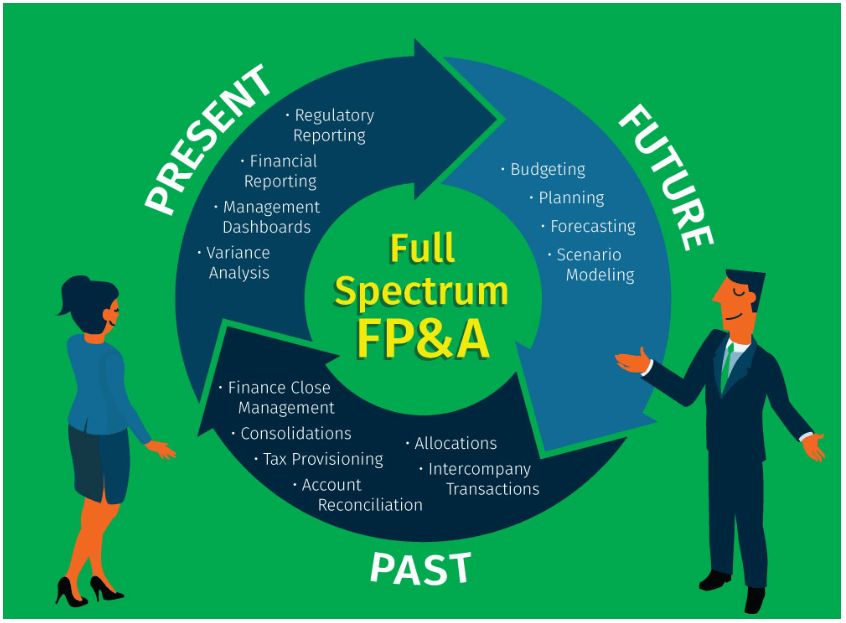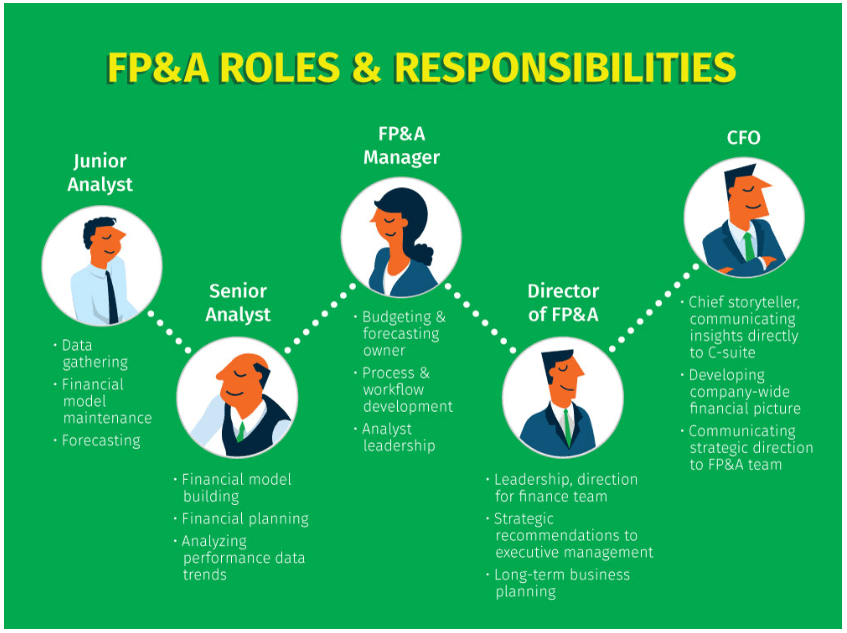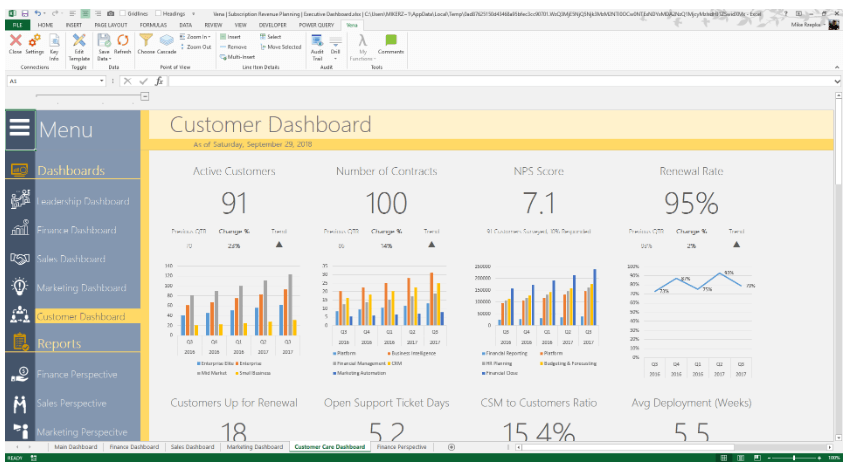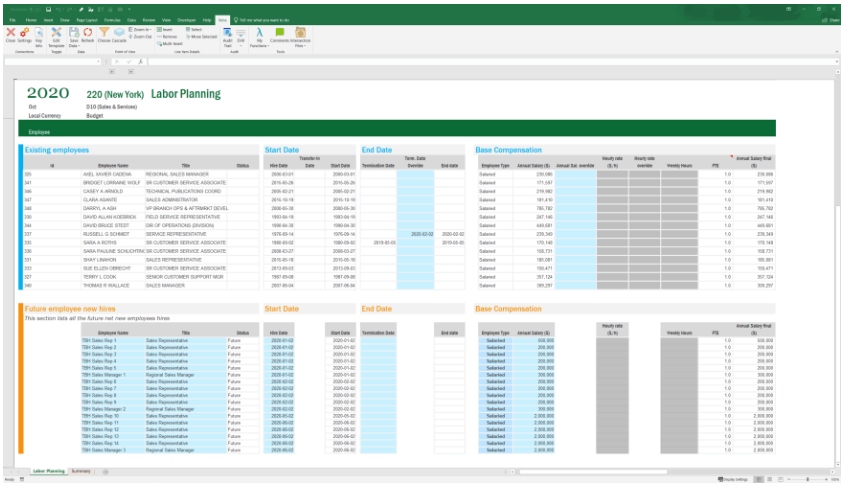Financial Planning and Analysis: Roles and Best Practices
As the role of FP&A continues to evolve, technological proficiency, communication skills, and the ability to tell the story behind the numbers, will equip FP&A professionals to address the modern demands they face.

Financial planning and analysis (FP&A) combines the financial close process with budgeting, forecasting, reporting and analytics to predict what investments, resource allocations and other decisions will best achieve a company’s objectives. While the concept has been around for decades, recent advancements in cloud software have enabled FP&A teams to provide company leaders with real-time information and in-depth analysis to align business goals and plans across an organization.
Companies need financial planning and analysis no matter what state the economy is in. During times of growth, FP&A is essential for planning business objectives. During leaner or more turbulent times, FP&A helps determine what course corrections and adjustments will keep the company on track and in optimal fiscal health.
FP&A is the backbone of the modern finance department. Tasked with consolidating, forecasting, analysing and reporting on data to support decisions that drive the best business results, FP&A teams make recommendations that have a direct impact on their companies’ success. It’s imperative, therefore, that FP&A professionals incorporate best practices in not just their core tasks, but in uncovering and clearly communicating actionable insights to their companies’ key decision makers.

Modern FP&A software is the key to providing these insights. FP&A professionals now have at their disposal sophisticated modelling and analytics that allow them to adapt to changing market conditions faster than ever before. The resulting budgets, forecasts and strategies can be forward-reaching or remain agile as the business and industry landscape change from day to day.
What Is an FP&A Professional?
An FP&A professional uses data, tools and processes such as budgeting, planning, forecasting, analysis and reporting to help businesses make well-informed decisions and achieve a wide range of goals. Traditionally, FP&A analysts, managers and directors reside within the finance department, but recently, FP&A has taken a more visible role organisation-wide. Today, key FP&A processes and responsibilities include:
Analysis is what enables FP&A professionals to translate raw numbers into insightful KPIs to share with decision makers and form a holistic picture of an organisation’s fiscal health. Analysis helps drive informed decisions throughout multiple departments and the business as a whole.
Planning is crucial in determining what a company’s fiscal and operational goals will be. During this phase, FP&A teams work closely with executive teams and stakeholders to align departmental plans, creating a unified model of goals and expectations.
Budgeting is the process of anticipating, deciding and documenting annual expenses and revenues in the best way to meet operational goals. Developed once a year, taking three to six months to complete, the annual budget is the cornerstone of traditional FP&A. The budget is also the first iteration of the forecasting process.
Forecasting is the process of establishing and regularly updating a company’s expected future performance based on past results, as well as current and anticipated future conditions. Scenario forecasts account for expected changes in business conditions, while rolling forecasts involve regular updates extending beyond the fiscal year. Compared to a static budget, forecasting helps companies better prepare for changing conditions and improve their ability to predict the future.
Modeling is how FP&A teams use information from multiple sources such as accounting, business operations and finance to model new assumptions, run sensitivity analysis and test alternatives that predict how operational decisions might affect their companies’ financial future.
Reporting traditionally refers to financial reporting, which shows past performance, often analysed further by management and shareholders. Management reporting communicates analysis and insights to decision makers, typically through self-service dashboards that allow users to drill into the details behind summary data. Regulatory reporting combines various data and analyses into reports required by law for public companies, banks and other regulated businesses.
Financial close management involves reconciling accounts, reporting period-end results (actuals) and other financial management practices. Traditionally considered the purview of accounting, financial close processes are very much a part of modern or full-spectrum FP&A. Bringing the close process into the fold provides the actuals needed for FP&A purposes including variance analysis, reforecasting, ad hoc management reporting and more.
The FP&A Career Path
Education for FP&A professionals varies, but traditional degrees supplemented with online certifications are common. Webinars, courses and other resources teach skills such as building a successful financial model, performing valuation analysis and completing system developments/integrations. Since modern software is providing more automation, modern FP&A professionals spend much of their time extracting insightful recommendations from data.
Although it varies by organization, many FP&A teams are organized into junior analysts, senior analysts, and FP&A managers and directors.

Junior analysts often arrive in the position by segueing from an accounting career or after completing a bachelor’s degree in a finance- or economics-related field. Junior analysts often help to set up and maintain database systems. Typically, the role requires an understanding of coding or app integrations, skills which are in high demand. The junior analyst often works on a specific product or project and reports directly to a more senior member of the FP&A team.
Successful senior FP&A analysts possess high-level critical thinking skills and a thorough understanding of the company’s overall financial goals. A valuable senior analyst is able to create strategic financial roadmaps based on multiple forecasts and models, providing managers with performance- and data-driven recommendations and analysis that will help inform company-wide strategy.
FP&A managers have a technical background in data analysis and corporate finance, but also possess the communication and leadership skills necessary to manage the FP&A team and communicate its findings to company decision makers. FP&A managers perform high-level analysis and provide direction to junior and senior analysts. The FP&A manager also needs to translate complex financial information into actionable insights to be delivered to company management.
The FP&A director or VP is responsible for directing and overseeing all aspects of FP&A. The FP&A director works with the CFO to develop long-term business and financial plans, ensuring company management has the insights they need to make quick, smart, data-driven business decisions.
At the top of the FP&A hierarchy is the CFO. In the paradigm of modern FP&A, the chief financial officer is more than just the top bean counter keeping the auditors at bay. The CFO is the chief storyteller, tasked with communicating the organisation’s full financial story to the rest of the C-suite.
In this role, the CFO brings together the full financial picture, eliminating data islands, breaking down silos and connecting disparate information streams to form one cohesive story. This is what full-spectrum FP&A is all about: not just reporting the numbers (the financial what), but the why and the how.
The CFO tells the story of why the numbers are what they are, employs the analysis and modeling to show how the organisation can make the best data-driven decisions possible and, most importantly, communicates this information clearly and efficiently.
FP&A Best Practices
Single Source of Trusted Data
Responsible FP&A begins with trusted data. Since FP&A should be an integral part of major business decisions, it’s imperative that the data is accurate, consistent and easily auditable.
Modern FP&A software is a critical tool in addressing this best practice. With customised roles, rules and access permissions integrated into an underlying, centralised and connected database, modern solutions ensure all users have a trusted, single source of the truth. Additionally, today’s leading FP&A solutions offer version control, audit trails and transaction-level drill-down capabilities to provide transparency into FP&A data and the processes that use them.
Driving Strategic Business Planning
In direct collaboration with department heads and stakeholders, FP&A teams compile a list of prioritised business needs to be budgeted for and determine which long-term goals are company priorities. FP&A teams work closely with company management to create strategic plans by:
- Analysing and finding correlations between financial and product, sales, marketing, supply chain and other operational data to uncover the story behind summary financials
- Determining what resources are best allocated where and when
- Creating rolling forecasts to continually improve forecasting and planning accuracy
- Translating forecasts into actionable departmental plans aligned across the business
- Performing a variety of what-if and scenario analyses to prepare for any change in internal or market conditions
Once defined, this plan can easily be shared throughout the company. By using a modern FP&A software solution, managers can easily access high-level data or drill into transaction-level details directly from their dashboard reports. Software that integrates directly with Excel allows finance and business users to pull the numbers and insights they need, using the software they already know and love.
Real-Time Performance Monitoring
Continuous monitoring of financial and non-financial performance is an essential FP&A role. Effective financial monitoring can identify variances between forecasted and actual results to determine where existing plans need adjustments in order to remain on target.
Monitoring operational performance can help identify problems in production, distribution, marketing and more, in order to make similar course corrections on resource allocation and investment.
Best practice guidelines for monitoring require teams to:
- Provide stakeholders with real-time, self-serve dashboard reports
- Conduct regular variance and profitability analyses
- Regularly analyse scenario plans and what-if models to be ready for changing conditions on the fly
- Communicate critical analysis findings to company leadership
- Assess changes in compliance obligations to confidently meet regulatory reporting and security requirements
- Make sure to look beyond standard financial statements to monitor business KPIs, including customer acquisition costs (CAC), customer lifetime value (CLV) and customer satisfaction

Insightful Analysis
An FP&A professional equpiied with the right tools will spend 70 to 80 percent of their time analysing data trends, versus 20 percent in more traditional, siloed finance teams. Teams should perform variance, profitability, scenario and other analyses on a continual basis as changes occur both within the business and externally. Best practices for analysis include:
- Consolidating data from all relevant sources
- Understanding the cause of variances between actual and forecasted data
- Understanding the context of the data set: Is it relevant to a specific date range, region or line of business?
- Working to establish a hypothesis and reformulating it as it aligns with the data
- Formulating insights that lead to smart business actions
- Remaining agile with regard to industry trends and a changing landscape
- Forecasting on a rolling basis to capture changes, momentum and a variety of scenarios
Modern FP&A software solutions help drastically reduce the time it takes to compile and analyse data by offering in-the-moment financial intelligence. Analysts can use scenario planning to model and predict the impact of various scenarios on an organisation’s bottom line.
Organisational Alignment
The ultimate best practice is to align planned performance with actual performance. By implementing a software tool that incorporates the full spectrum of FP&A processes—from financial close management, to budgeting and planning, to reporting and analysis—finance teams can align processes, plans and data across the organization. Modern cloud FP&A software empowers teams to manage the following processes and more, with a single, centralized solution:
- Budgeting
- Financial close management
- Tax provisioning
- Consolidations
- Account reconciliation
- Allocations
- Regulatory reporting
- Dashboards
- Variance analyses
- Planning
- Forecasting
- Financial reporting
- Scenario modeling
Modern FP&A cloud solutions store financial data in a centralised cloud database, creating a secure, single version of the truth. Cloud architecture offers on-demand scalability for any number of accounts, entities and transactions, allowing finance and business teams to access and share information instantaneously, and bringing teams into alignment across an organization.
FP&A: Tools for Success
Modern cloud solutions give FP&A teams more time to analyse and monitor data, to ensure their reports and recommendations inform smarter, faster business decisions. Workflow automation goes a step further, making core finance processes as efficient, accurate and insightful as possible. And by analysing and reporting on the resulting financial and operational metrics, FP&A teams are ensuring that all departmental and business-wide plans are lined up and based on the same, trusted data.

Of course, FP&A will evolve, and continue to take on a larger role within organisations. Although the roles will continue to sit under the umbrella of finance for the foreseeable future, the insight and analysis from FP&A will inform a growing number of planning decisions across departments and organisations.
By adhering to these best practices and building out talented FP&A teams, businesses can be sure to make confident and informed decisions that help exceed organisational goals. Teams that operate with transparency and effective communication, that follow best practices like those described above, will be in the best possible position for success—even through periods of constant change.
Looking to get started with Vena’s ground-breaking FP&A solution? Speak to a consultant at Vena’s U.K. partner Influential Software.
